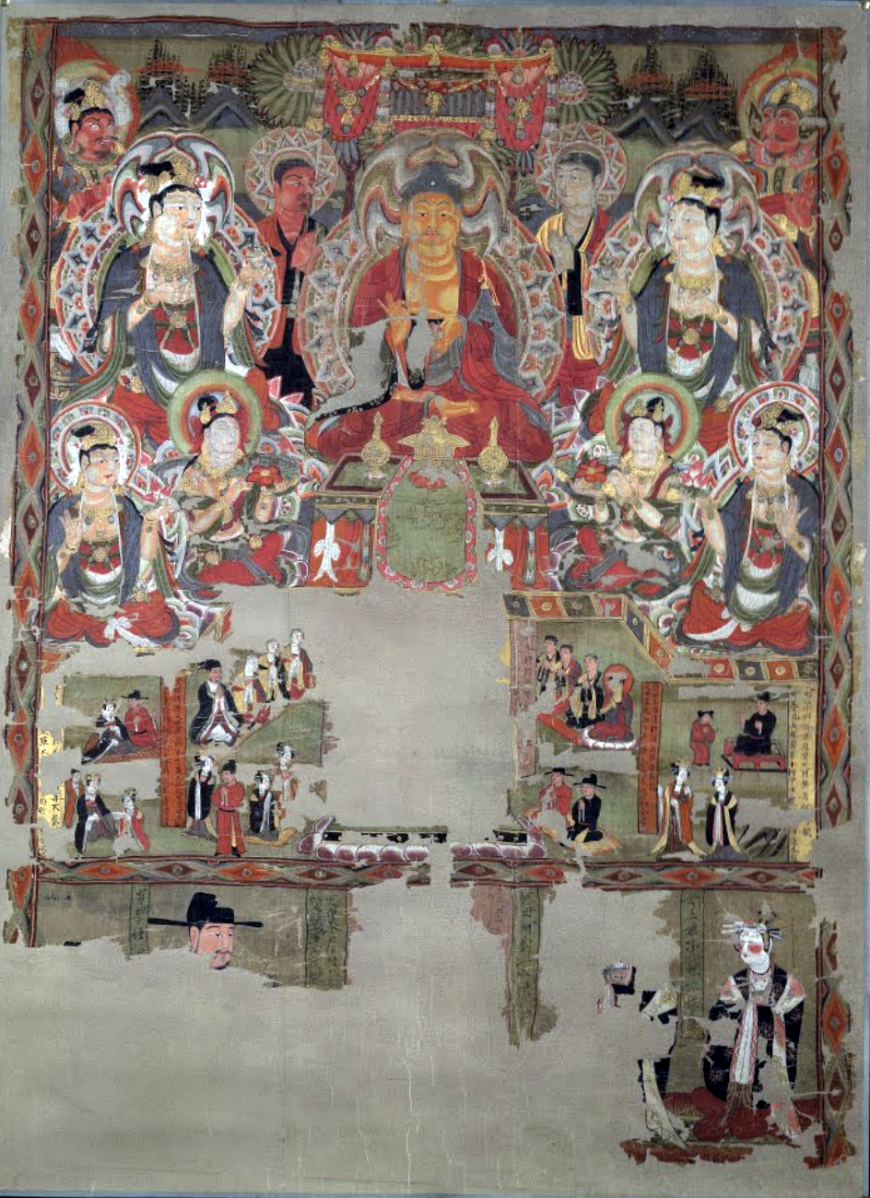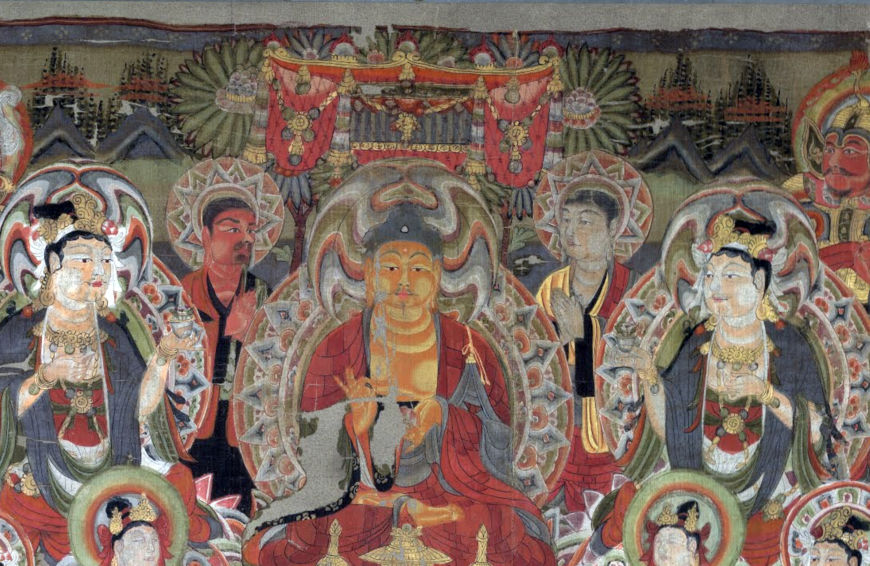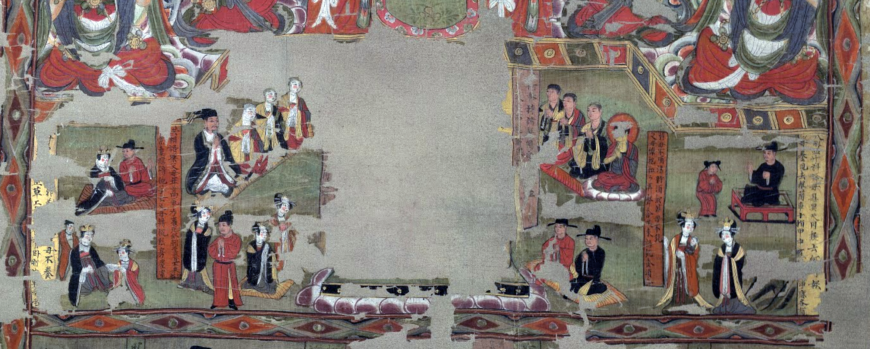
Illustration to the Fumu enzhong jing, 951–1000, Northern Song Dynasty, ink and colors on silk, findspot: Qian Fo Dong, Dunhuang, China, 134 x 102 cm (© Trustees of the British Museum)
The upper part of the painting is occupied by a Buddha group with the historical Buddha, Shakyamuni, in the center flanked by two monks and principal and lesser bodhisattvas. Two of the four Guardian Kings are shown, one in each of the top corners. The central section of the painting is made up of scenes illustrating the Fumu enzhong jing, an apocryphal sutra that was popular at Dunhuang in this later period.

Illustration to the Fumu enzhong jing, 951–1000, Northern Song Dynasty, ink and colors on silk, findspot: Qian Fo Dong, Dunhuang, China, 134 x 102 cm (© Trustees of the British Museum)
The text in the accompanying cartouches corresponds almost exactly to texts surviving in manuscripts found at Mogao. This also accounts for the mountain setting behind the Buddha group, as the beginning of the sutra is set at Mount Grdhrakuta. The sutra describes blessings received from one’s parents.

Illustration to the Fumu enzhong jing, 951–1000, Northern Song Dynasty, ink and colors on silk, findspot: Qian Fo Dong, Dunhuang, China, 134 x 102 cm (© Trustees of the British Museum)
On the right a boy is shown receiving instructions from his father, and there is a baby in the arms of his mother. The relevant text is that in the cartouche to the left of the scene: ‘Father and mother cherish and hold him making gentle sounds; he smiles but cannot yet speak. When he is hungry and needs to eat, were it not for his mother he would not be given suck.’ Another scene (to the top on the far left) illustrates how old parents are abandoned after their son marries.
Filial piety was one of the most important Confucian virtues, and this painting illustrates that it remained important in Chinese Buddhism. Donor figures once occupied the lowest register, but are now largely destroyed. Best preserved is the lady on the right whose clothing, hair style and elaborate make-up is typical of tenth-century fashion at Dunhuang.
© Trustees of the British Museum

